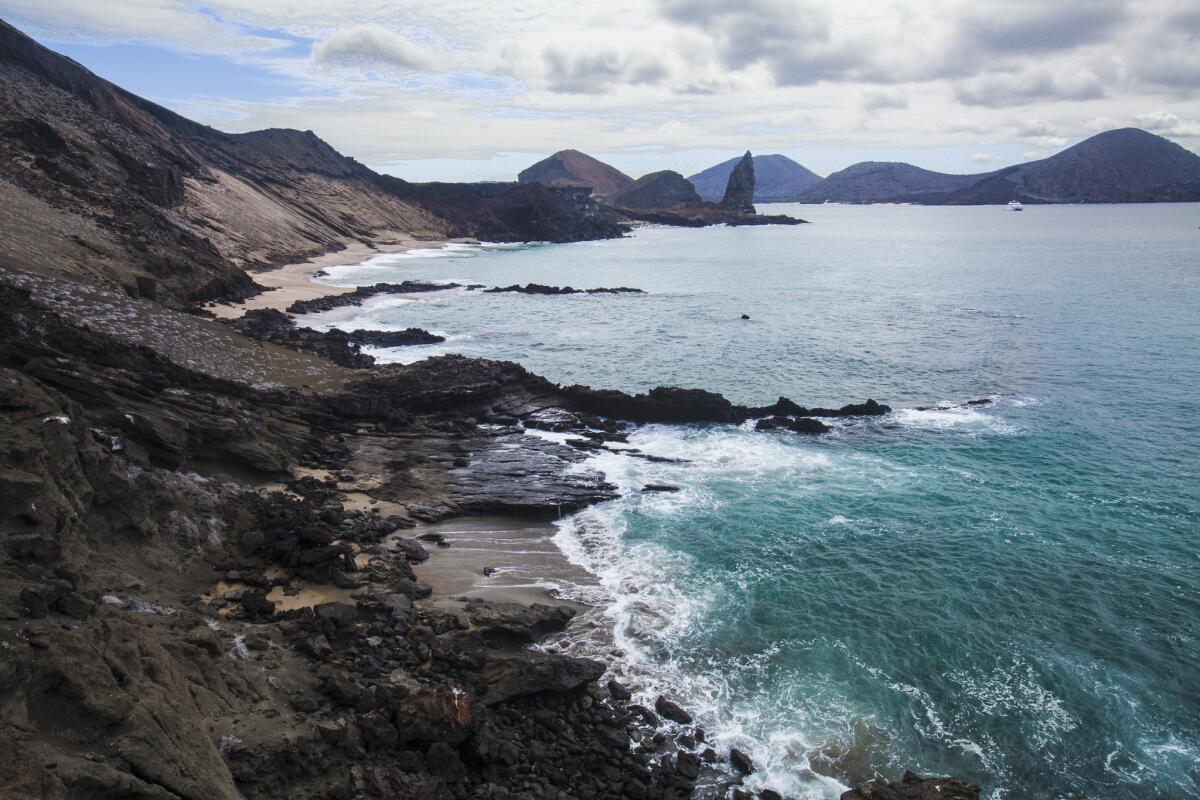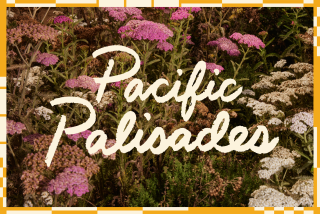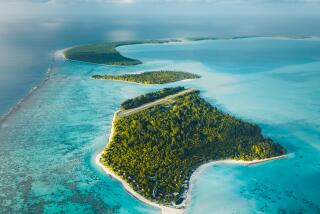Galápagos Islands see an evolution in luxury with Pikaia Lodge

An expedition to the Galápagos Islands to view the wildlife and scenery that inspired Charles Darwin is, by almost any measure, a trip of a lifetime. But despite the time and expense involved in getting there, travelers in search of luxurious accommodations have had, until recently, to settle for less than fabulous.
The Ecuadorean government is tough on development in this remote, ecologically fragile archipelago some 600-plus miles west of Ecuador’s mainland. But last October, Pikaia, a 14-room lodge, opened its high-end, eco-friendly doors on Santa Cruz Island, quietly transforming the landscape. I booked a weeklong stay for December, keen to discover how it might be possible to revel in hedonism while immersing myself in the legendary treasure chest of the natural world.
Darwin spent five weeks in the Galápagos in 1835, and it was during that time that he noticed how the islands, each with its distinct topography, supported distinct species of animals as well. Those observations inspired him to ponder the mystery of how those species evolved, leading, eventually, to his theory of natural selection and survival of the fittest. The rest is science history.
It’s not easy to get to the Galápagos from California, but I kept reminding myself that its off-the-beaten-path location has ensured that the islands remain pristine and inhabited by the likes of blue-footed boobies, giant tortoises, Darwin’s finches and land iguanas.
My journey took me first to Miami, where I connected for a 41/2-hour flight to Guayaquil, Ecuador. There, I overnighted at Hotel Oro Verde, one of the few five-star hotels in the country’s largest city and main port.
Early the following morning, I took a 90-minute flight to Baltra Island, the primary gateway to the Galápagos. I was met by Veronica Maruri, my sporty Pikaia guide who would accompany me for the rest of the week. We were driven from the airport to a ferry, which we boarded for a 10-minute ride to Puerto Ayora on Santa Cruz Island. There we were met by a van and driven one hour to the Pikaia Lodge, which sits on the edge of an extinct volcano and offers sweeping views of the cerulean Pacific Ocean.
My spirits soared as the van snaked up the tree-lined driveway to the hilltop lodge. Although Pikaia, designed by Ecuadorean architect Humberto Plaza, is considered too modern by some local old-timers, I loved it. Its aesthetic is unlike anything else in the Galápagos. Set on a private, 77-acre property, the buildings were created from concrete, glass, recycled steel, bamboo and sustainably grown South American teak.
When I asked at the front desk about Plaza’s influences, Andrew Balfour, the general manager, said, “Evolution was the main influence, and we wanted to use recycled and ecological materials, knowing how priceless the environment here is and the desire of the owner to have the lowest impact. He wanted a minimalist design so that nature would be the predominant art.”
Pikaia features an infinity lap pool with a 180-degree view over the now-forested crater, a spa, a gym, the Evolution restaurant, the outdoor DNA Bar and an inviting library where nature documentaries about the Galápagos are shown nightly.
Guest rooms are all large. The 880-square-foot Pool Suite comes with its own plunge pool, sitting room, terrace and breathtaking view of the ocean. The non-suite rooms are 650 square feet, and the upstairs Terrace Rooms have floor-to-ceiling glass walls on two sides that give you the impression that you are floating between earth and sky. It’s a spiritual awakening every time you open the blinds.
Each room has the usual trappings of a luxury lodge: biodegradable, botanically scented bath products; walk-in closet; high-thread-count sheets; a jet bathtub; iPod speakers; nightly pillow treats and Wi-Fi (although it was spotty during my stay). The weather is what you might expect atop a 1,500-foot crater: moody. You can go from swimsuit to sweater in a matter of minutes, so it’s best to pack accordingly.
Although it is tempting to revel in the lavishness of the lodge — I remained on the grounds one day and strongly recommend it if you are staying for a week — the real purpose of coming to the Galápagos is to tread lightly on Darwin’s stamping grounds, and Pikaia has elevated that experience to an art form.
A stay at the lodge includes transportation on the Pikaia I, a 100-foot motor yacht and luxury day-tripping vessel that takes guests to neighboring islands for snorkeling and onshore explorations. I had my own cabin with a private bathroom and queen bed, which meant that after a beer and lunch or a snorkeling expedition, I could shower, change and take a siesta while the captain navigated to the next island.
The Pikaia I sails within a four-hour range of Puerto Ayora. (If you do not take kindly to the seas, day trips on Santa Cruz will keep you plenty occupied.) The islands within this range have an abundance of sights, and the stops are timed so you don’t have to compete with the 50- and 100-passenger cruise boats.
The Pikaia I carries a maximum of 16 guests, which means the guided groups going ashore are small. I spent every other day on the boat, or three days of my week there. We would leave the lodge at 7:30 a.m., drive to the port and eat breakfast onboard while we motored to our destination.
On North Seymour Island we saw the famous blue-footed boobies, the males strutting around and lifting their sky-blue feet to impress the females. We also observed frigate birds, which were in season, the males displaying their bright-red gular pouches that inflate under their beaks to attract mates. Although frigate birds are not unique to the Galápagos, the islands host the largest and most protected populations of them on the planet.
On South Plaza, a small but lovely island with Seussian cactus trees and rocks covered in orange lichen, we saw dozens of colorful land iguanas, which had originally floated here from the mainland and evolved into an endemic Galápagos species. Another endemic species, the Galápagos sea lion, can be seen on many islands, although on South Plaza there is a sea lion “hospital,” where wounded males, or those apparently recovering from unrequited love, retreat to heal.
We also spent time on Bartholomé, Santa Cruz, Santa Fe and Santiago islands, all of which had their own forms of life and topography.
Ninety-seven percent of the Galápagos Islands are preserved in one national park. In order to enter any of this land, visitors must be accompanied by a nationally certified guide. This meant Maruri accompanied me on all outings from the lodge, including those on the Pikaia I. She was originally from Guayaquil, but the 52-year-old has spent 30 years in the Galápagos. She was gregarious, fun, flexible, smart and knew the answer to every question. The only thing she wasn’t flexible about was the rules.
“Don’t come any closer than six feet to the animals,” she warned. “If they come to you, we cannot prevent it, but you cannot go to them. And no wandering off the path or striking out on your own.”
It turns out the animals flout the rules regularly. Because they have never felt threatened by humans, they are often curious about us. My highlight came when snorkeling off Santa Fe Island. Several young sea lions slipped into the water beside me and wanted to play. They came hurtling toward my mask, dodging under me at the last second, flipping around and twirling back over me. This kind of experience — the sheer joy of cavorting with wild creatures in an environment that is safe for everyone — is the heart and soul of the Galápagos experience.
Another buzz came when visiting a baby seal “nursery” on Santa Fe Island, where a tiny pup, awaiting its mother’s return from fishing, waddled over to me and rested its head on my shoe, gazing up at me with bottomless eyes. “Don’t move,” Maruri instructed. “Allow it to move away first.” And I treasured swimming with Galápagos penguins (the only wild penguins in the Northern Hemisphere) on Bartolomé Island. In truth, they shot past my face at mind-bending speed.
The topography was notable as well, especially the tortured shapes of arrested lava rock at Sullivan Bay on Santiago Island and the 400 steps to the barren, volcanic peak of Bartolomé, where I had to shoo away sunbathing sea lions, by treading heavily, to reach the path.
Each time we returned to the Pikaia I, we’d be met with lemonade, tea and a snack. Lunch, such as grilled fish with the best chimichurri sauce I’ve ever had, salad, rice and pasta, was also served on board and was always simple, fresh and delicious.
The land-based trips on Santa Cruz Island were just as illuminating. While visiting the giant tortoises, which grazed like gray boulders in the grasslands, I learned that whalers, pirates and explorers had killed these creatures by the hundreds for food. Many of the islands have — or have had — their own species of giant tortoise, some of which are extinct, such as those on Pinta Island, whose last remaining representative, Lonesome George, died in 2012. Nonetheless, I was heartened when Maruri told me that 95% of the islands’ species that were here before the arrival of humans still exist.
At the end of a long day exploring, I’d sip a glass of wine and luxuriate in a bubble bath while staring out over the crater. Then I’d dine on dishes such as aji de carne soup with pan de yuca (cassava bread), suckling pig or jumbo shrimp. The chef at the lodge specializes in Ecuadorean and Peruvian food with European flourishes; the menu changes every three days.
On the day I remained at the lodge, I indulged in a body rub using volcanic Galápagos mud followed by a shamanic massage, where the masseuse rolled a rain stick over my oiled muscles, followed by a slow and hypnotic rubdown. Dangerously relaxed, I staggered out of the spa into a foggy evening. Up here you really do have your head in the clouds.
When it came time to leave, the staff — local, gracious and highly trained — lined up to say goodbye. Maruri saw me all the way to the Baltra Island airport, giving me a hug as I boarded.
As I looked down on the islands, I couldn’t help but think that Darwin, who slept with fleas much of his time on the Galápagos, would approve of the evolutionary leap that luxury has taken here for humankind.
The purpose of coming to the Galápagos is to tread lightly on Darwin’s stamping grounds. Pikaia has elevated that experience to an art form.
::
If you go
FLY
From LAX, Avianca, Copa, American and LAN offer connecting service (change of planes) to Guayaquil, Ecuador. From Guayaquil, LAN, TAME and Avianca have flights to Baltra Island Airport in the Galápagos.
STAY
Pikaia Lodge, 011-593-4371-1670. From $1,260 a day, with three- four- or seven-day programs. Includes full board, nonalcoholic beverages, transfers, excursions, guide, boat trips, wet suits and all snorkeling gear. Stays are restricted to Monday arrivals for the four- and seven-night programs and Friday arrivals for the three-night program.
DETAILS
U.S. citizens do not need a visa for Ecuador for a stay of fewer than 90 days, but you will need to have $100 (U.S.) in cash for the Galápagos Park entrance fee upon arrival at the Baltra Island Airport.
This story is part of the Los Angeles Times’ Image Magazine spring fashion and travel issue.
More to Read
Sign up for The Wild
We’ll help you find the best places to hike, bike and run, as well as the perfect silent spots for meditation and yoga.
You may occasionally receive promotional content from the Los Angeles Times.






